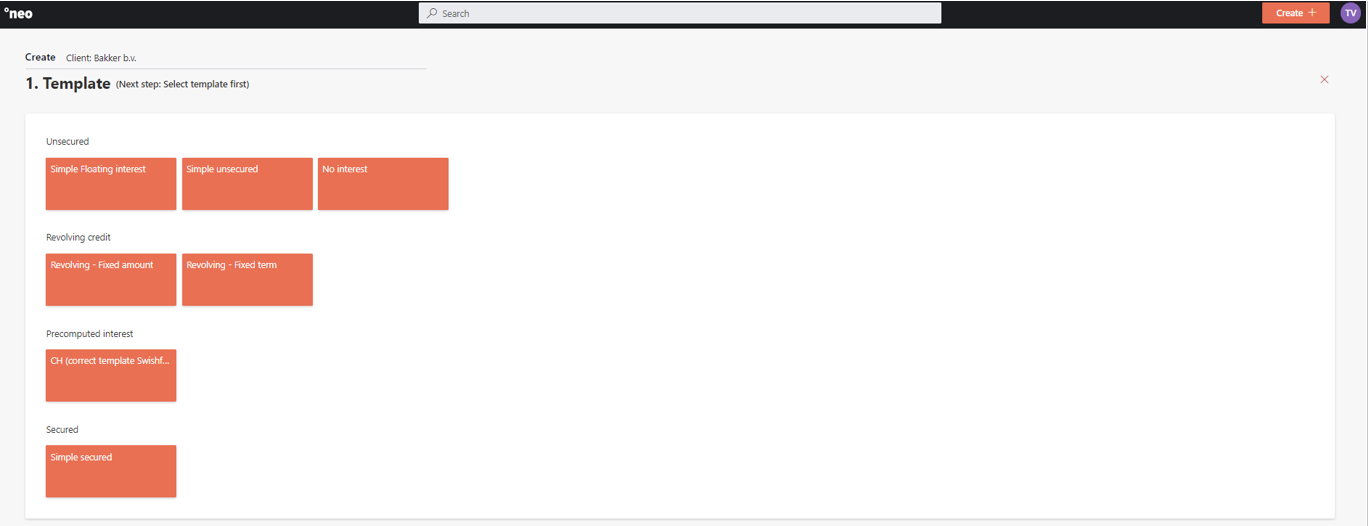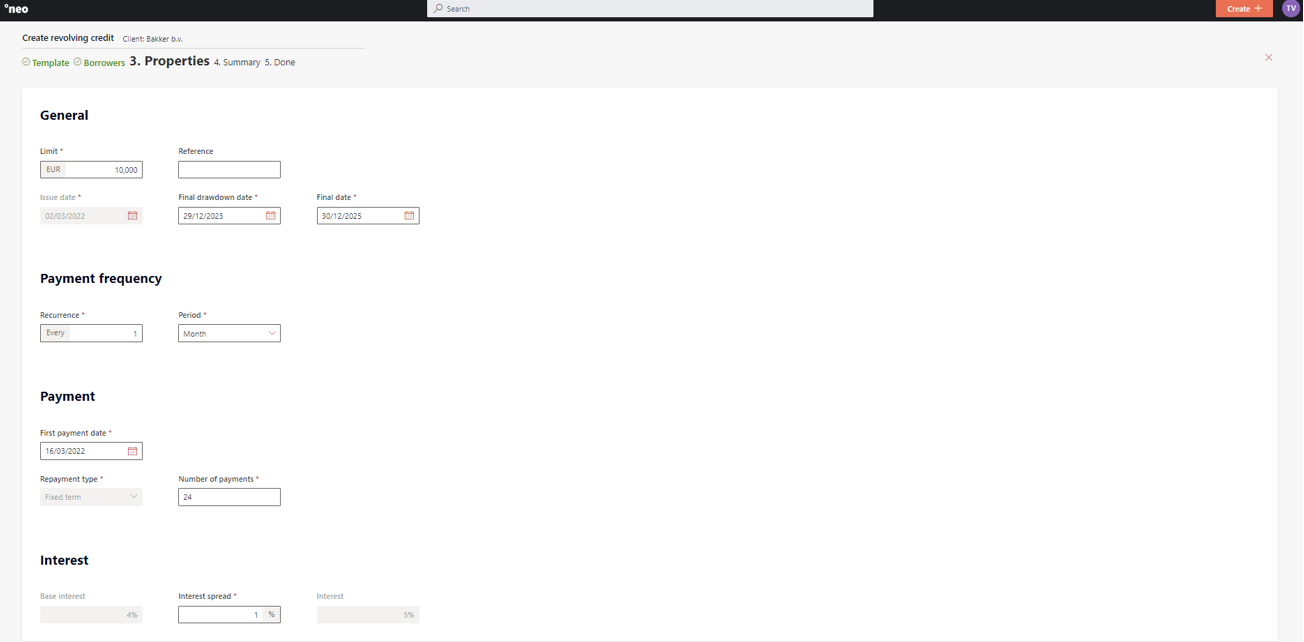Revolving credit
Introduction
Revolving credit is a type of loan where credit replenishes up to the agreed upon threshold (known as the credit limit) as the borrower pays off debt. A common example of revolving credit are credit cards, which allow borrowers to access money up to a predefined limit, and as they pay it off, the balance becomes available for use again.
Note: Revolving credit is created in the same way as other loan products, just with a few different properties.
A revolving credit will require a number of properties to be set during the loan creation process. Some of these properties overlap with those outlined for unsecured and secured loans – issue date, settlement date, interest spread, first payment date, and months between payment – however, with a few additional properties as described below.
| Title | Description |
|---|---|
| Limit | This refers to the credit limit. The credit limit is the maximum amount of money the borrower can access. This limit is adjusted as funds are borrowed (referred to as drawdown) or repaid. The changes to the limit as funds are borrowed depends on the revolving credit type that is configured in configuration portal. |
| Final drawdown date | After the drawdown date it will not be possible to borrow any more funds from the revolving credit line, just repayment. |
| Final date | The final date for the revolving credit, after which all outstanding debt is expected to be fully repaid. |
| Payment frequency | The frequency/recurrence of repayments (e.g., every 1 week, every 2 months). |
| First payment date | Date of the first expected repayment for the loan. This date must be equal to or greater than the issue date. If no drawdowns have been completed prior to this date (therefore there are no repayment cashflows generated yet), then the day of the month from this date will serve as the billing cycle day when a drawdown is finally completed (e.g., the 15th of every month). |
| Repayment type | The method in which repayment cashflows will be determined. This can either be 'Fixed term' or 'Fixed amount' depending on the template selected. If the repayment type is fixed term, you will have to define the 'Number of payments' over which the outstanding balance will be repaid (i.e., outstanding balance will be divided over the number of payments to determine the repayment amount for each period). If the repayment type is fixed amount, you will have to define the ‘Amount' that will be repaid each payment period (i.e., outstanding balance will be divided by the fixed amount to determine the duration of the loan). |
| Interest spread | The applicable interest spread for the loan. This spread can be greater than, less than, or equal to zero. The base rate is defined on the loan template level and spread can be applied on top of the base. Positive spreads will increase the total interest of the loan versus the base rate, and negative spreads will decrease the total interest of the loan versus the base rate. |
The types of revolving credit that can be configured are:
- Revolving: the limit is the total outstanding drawdown amount on this revolving credit. As the borrower makes repayments, the limit increases again (up to the maximum amount).
- Term: a borrower can make drawdowns when they want until they reach the maximum limit, but as they make repayments the limit is not replenished.
Note: If the template has principal payment type = 'Equal principal' or 'Equal payments', then the repayment type will be ‘Fixed term’. If the template has Principal payment type = ‘Fixed equal payments’, then the repayment type will be ‘Fixed amount’).
Creating a revolving credit
Just as with unsecured and secured loans, to create a new revolving credit you can either begin the process from the Dashboard by clicking the ‘New’ button in the top right corner, or by navigating directly to the client’s profile and clicking ‘Actions’ > ‘New: Loan’.

You will then have to select a revolving credit template from the list of available product templates. These standardized product templates are created in the Configuration portal.

Once you select revolving credit from the list of loan templates, you must then provide all the applicable borrowers, and define the terms of the revolving credit.
Properties to be defined during this step include the credit limit, issue date, final drawdown and final date, interest and the payment schedule.

Finally, as with unsecured and secured loans, you will be prompted to review the summary of the revolving credit details, and submit it for approval or automatic creation.
The revolving credit is now created and will be displayed under the list of products on the borrowers’ 360° Overview.
Updated 10 days ago